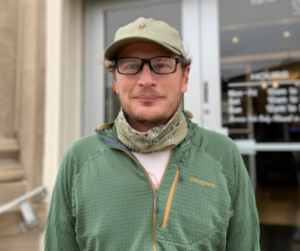Backcountry Basics: Water Filters and Purifiers
Water treatment is essential on the trail. Safety is your number one priority for enjoying the outdoors, and unlike any other gear category, proper water treatment will protect your health by preventing water-borne illness. Water treatment is any process that improves the overall quality of drinking water. For backpacking or camping, this includes filters, purifiers, chemical additives, boiling, and even Ultraviolet (UV) devices. The most common types of water treatment are water filters and water purifiers. Let’s break down each type to help you find the right one for your needs.
Water Filters and Water Purifiers
Safety
Filters and purifiers remove all floaters, and will generally reduce odors and bad taste. Both will remove larger contaminants, like protozoa and bacteria, but purifiers are able to remove even smaller viruses. In most backpacking scenarios, a water filter is more than adequate. The most common microbes found in drinking water – Cryptosporidium, Giardia, E. coli and Salmonella – are easily removed by water filters. Eliminating viral microbes that are much smaller in size requires a water purifier, or a secondary physical water treatment such as boiling, to make it safe for drinking. Fortunately, viruses are less common in most areas.
Viruses are more of a concern in areas heavily trafficked by other people, such as base camps, popular camping spots, hot springs, lakes, or resupply camps. Treating water for viral contaminants is generally recommended when traveling in places where the infrastructure may not be adequate to guarantee safe drinking water.
Style
Water purifiers and filters are available in three basic categories:
- Pump Style Filters
- Great for quick fill-ups on the trail, and generally very reliable and easy to use
- Available in a variety of styles, sizes, weights, flow rates and price points, creating lots of options for any level of backpacker
- Require minor assembly
- Gravity Style Filters
- Highly recommended by our team for their ideal packability, weight and simplicity
- Great for larger groups or dry camps, as you can typically bring more water back to camp
- Straw/Squeeze Style Filters
- Lightweight and low cost
- Allows you to filter as you drink
- Excellent as a backup or emergency option
- Lower durability and shorter lifespan compared to a gravity or pump filter
Maintenance & Use
Whenever possible, get water from a moving source, such as a stream, creek, or river. If you are collecting from a lake, larger lakes are better. Avoid water that is heavy with particulates, especially if it is murky, muddy, or green. Water that is heavy in particulates can be made safe to drink, but it can clog or shorten the lifespan of a filter or purifier. Be sure to clean and dry the filter or purifier when you are done. Dish soap and hot water are excellent. Give your device plenty of time to dry out.
Most filters and purifiers will require some very basic assembly and maintenance, but doing this correctly is essential for creating safe drinking water. All filters and purifiers will come with a limited life span, which is typically measured by the number of liters filtered. Once the lifespan has been reached, simply change out the filter element – no need to replace the entire thing.
Avoid freezing temps and big drops. This is the most common way that filters or purifiers are damaged or destroyed. To avoid freezing a filter, bring it inside your sleeping bag on cold nights. Always be sure to follow manufacturer instructions, and when in doubt, get a new filter.
Other Options
A bandana or T shirt can make a great pre-screen, which helps remove floaters before diving into other options below:
-
Boiling
- A rolling boil will kill any microbes and viruses, making it completely safe to drink
- Boiling is a great tool to remove virus after filtering water
-
UV Light / Steripen
- Small tools that are effective against protozoa, bacteria, and viruses
- Great for international travel and the backcountry
- These lights are electronic devices and require a charge, which can be troublesome in the backcountry
-
Tablets
- Safe, easy, small, ultra-lightweight, inexpensive. Effective against protozoa, bacteria, and viruses
Like most backpacking gear, there are many water treatment options. Identifying your needs is a great place to start narrowing down the options.
 Meet the Author: Trystyn Molitor
Meet the Author: Trystyn Molitor
Trystyn graduated from the University of Montana with degrees in Recreation Management, Resource Conservation, and Geographical Information Systems. A backpacker for over 20 years, he has hiked and explored some of the most remote places in the country. Trystyn also spent a number of years working for the United States Forest Service as a

